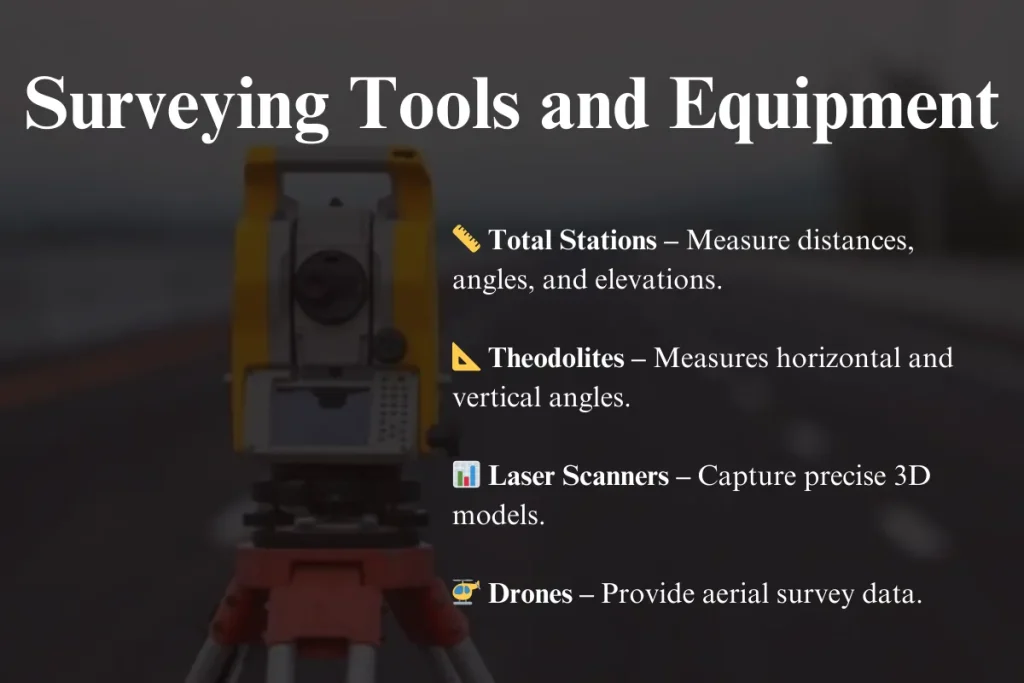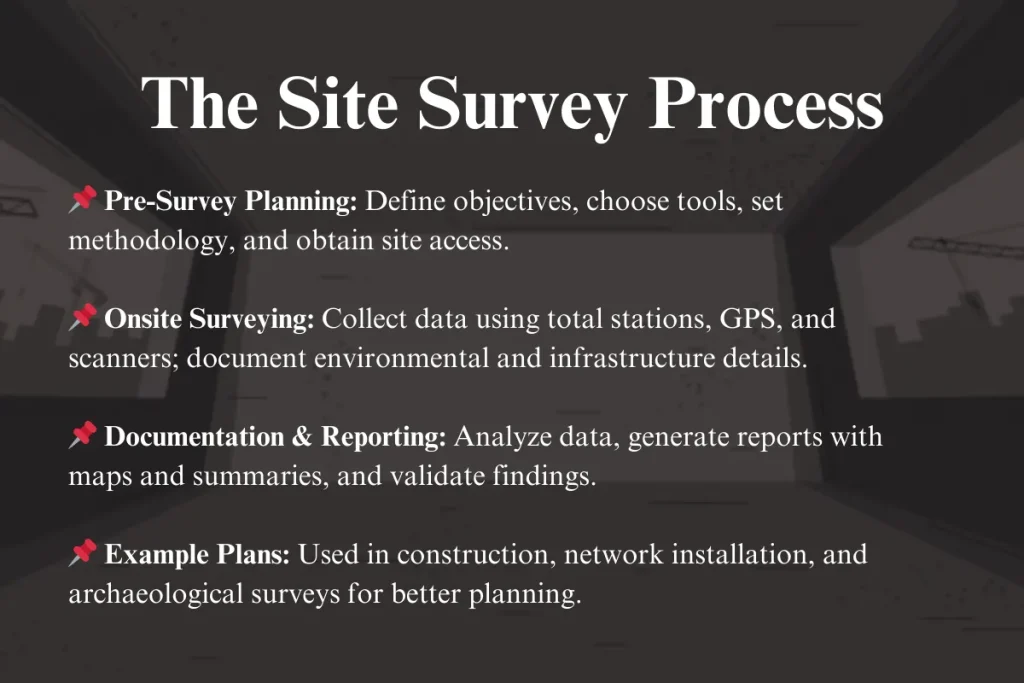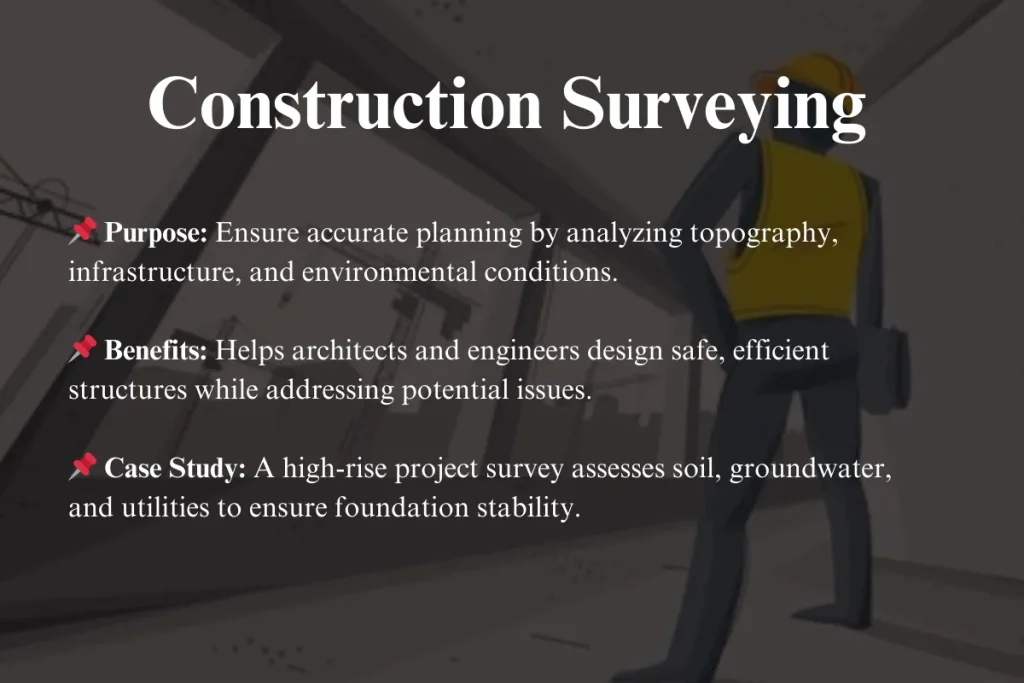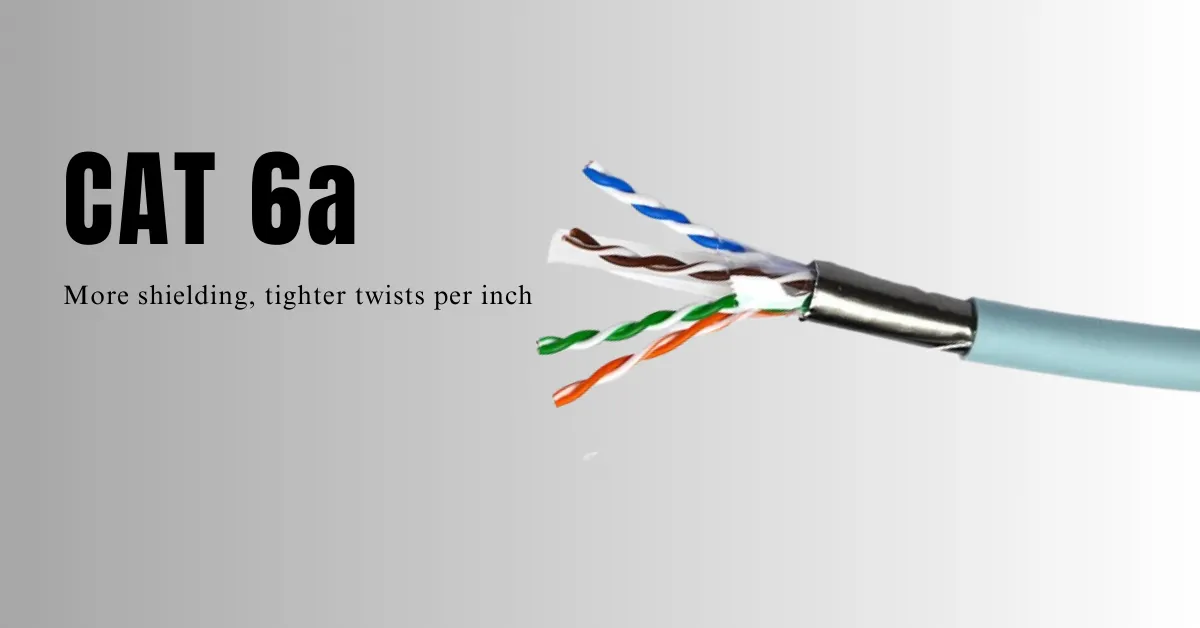Site Survey Guide | WiFi, Network & Construction Best Practices (2025)
Navigating the complexities of planning and executing projects can be overwhelming, especially when accuracy, efficiency, and risk mitigation are at stake. The process requires thorough preparation and reliable data to ensure success.
A site survey solves these challenges, comprehensively understanding the location and its conditions. With accurate data, resource optimization, and risk assessments, site surveys enable you to make informed decisions and achieve project goals seamlessly.
What is a Site Survey?

Definition and Purpose
A site survey is an essential process that involves inspecting a location to gather comprehensive data necessary for planning, designing, and executing a project.
This data is crucial for making informed decisions, identifying potential challenges, and ensuring the project’s success. Whether it’s for construction, IT infrastructure, or security systems, site surveys provide the foundational information needed to proceed confidently.
History and Evolution of Site Surveys
The practice of site surveying dates back centuries and has evolved significantly with advancements in technology. Early surveys relied on basic tools like compasses and chains, which provided limited accuracy.
Over time, the introduction of theodolites, total stations, and GPS technology has revolutionized the field. Modern site surveys now benefit from advanced tools such as drones and laser scanners, which offer high precision and efficiency.
This evolution has enabled surveyors to collect and analyze data with unprecedented accuracy, transforming how projects are planned and executed.
Types of Site Surveys
Active Site Surveys
Active site surveys involve real-time data collection and analysis. Surveyors use specialized equipment to measure and record various parameters directly on-site.
This type of survey is commonly used in wireless network installations and construction projects where up-to-date information is critical for making informed decisions.
Example: In a wireless network installation, an active site surveys involve using tools like Wi-Fi analyzers and signal strength meters to measure the performance of existing wireless networks.
Surveyors walk through the site, collecting data on signal strength, interference, and coverage areas. This information helps in determining the optimal placement of access points and ensuring seamless connectivity.
Passive Site Surveys
Passive site surveys involve observing and recording existing conditions without interfering with the environment. Surveyors document the natural state of the site, including existing infrastructure, topography, and environmental factors.
This type of survey is often used in archaeological studies and environmental assessments, where preserving the site’s integrity is paramount.
Example: For an archaeological site survey, surveyors document the existing conditions of a historical site without disturbing the artifacts. They use tools like ground-penetrating radar and photogrammetry to capture images and data.
This approach allows archaeologists to create detailed maps and plans for excavation while preserving the site’s integrity.
Predictive Site Surveys
Predictive site surveys use simulations and models to forecast future conditions and outcomes. Surveyors analyze existing data and create models to predict how changes to the site will impact the project.
This type of survey is particularly useful for planning large-scale projects, such as urban development and hydrocarbon exploration, where anticipating future scenarios is crucial.
Example: In urban construction, a predictive site survey involves creating 3D models and simulations to predict the impact of new buildings on the existing infrastructure and environment.
Surveyors analyze data on soil composition, traffic patterns, and environmental factors to forecast potential challenges and develop strategies to address them.
|
Type of Site Survey |
Key Features |
Methodology |
Specific Applications |
|
Active Site Surveys |
Real-time data collection |
Using tools to measure parameters on-site |
Wireless network installations, construction projects |
|
Passive Site Surveys |
Observation of existing conditions |
Documenting site without interference |
Archaeological studies, environmental assessments |
|
Predictive Site Surveys |
Simulation and modeling of future scenarios |
Analyzing existing data and creating models |
Urban development, hydrocarbon exploration |
Key Components of a Site Survey
Surveying Tools and Equipment

Site surveys rely on a variety of tools and equipment to gather accurate data. These tools can include total stations, theodolites, laser scanners, and drones.
Each tool serves a specific purpose, such as measuring distances, angles, or elevations. The choice of equipment depends on the type of survey and the specific requirements of the project. Utilizing a 4K screen resolution can improve the clarity and precision of survey data visualization.
- Total Stations: These are electronic/optical instruments used for surveying and building construction. They can measure distances, angles, and elevations with high precision.
- Theodolites: These are precision instruments for measuring angles in the horizontal and vertical planes. They are used in triangulation networks.
- Laser Scanners: These devices capture detailed 3D measurements of an environment. They are particularly useful for creating accurate models of complex structures.
- Drones: Equipped with high-resolution cameras and sensors, drones provide aerial views and access to hard-to-reach areas, enhancing the accuracy and efficiency of data collection.
|
Tool/Equipment |
Features |
Specific Uses |
|
Total Stations |
Measuring distances, angles, elevations |
Construction layout, topographic surveys |
|
Theodolites |
Measuring horizontal and vertical angles |
Triangulation, boundary surveys |
|
Laser Scanners |
Captures detailed 3D measurements |
Creating 3D models, complex structures |
|
Drones |
Equipped with high-resolution cameras and sensors |
Aerial views, accessing hard-to-reach areas |
|
Handheld GPS Devices |
Portable, provides precise location data |
Surveying small to medium-sized areas |
|
Mounted GPS Devices |
Attached to vehicles or drones |
Surveying large areas quickly and accurately |
Land GPS Equipment

Land GPS equipment has become a cornerstone of modern site surveys, offering precise location data essential for accurate mapping and planning.
These devices, available in handheld units or mountable on vehicles and drones, allow surveyors to efficiently cover large areas with reliable data, enhancing overall survey accuracy and efficiency.
- Handheld GPS Devices: Portable and easy to use, these devices are ideal for surveying small to medium-sized areas.
- Mounted GPS Devices: These are attached to vehicles or drones to survey larger areas quickly and accurately.
- RTK (Real-Time Kinematic) GPS: This technology provides highly accurate position data by using real-time corrections from a base station.
Software and Applications

Utilizing advanced software and applications is crucial for processing and analyzing site survey data. Tools like AutoCAD facilitate detailed drafting and design, while GIS platforms manage and analyze geographical data.
Additionally, specialized survey applications offer tailored features for data collection, processing, and visualization, streamlining the survey process and improving data accuracy.
- AutoCAD: Widely used for drafting and designing, AutoCAD allows surveyors to create detailed plans and blueprints.
- GIS: This system captures, stores, analyzes, and manages geographical data, making it crucial for mapping and spatial analysis.
- Survey Applications: Specialized applications offer tools for data collection, processing, and visualization, tailored to the needs of surveyors.
Data Collection and Analysis

Data collection is a crucial part of the site surveying process. Surveyors gather information on various aspects of the site, such as topography, existing infrastructure, and environmental conditions.
This data is then analyzed to make informed decisions and create detailed plans. Accurate data collection and analysis are essential for the success of any project.
- Topographic Data: Information about the physical features of the land, such as elevations, slopes, and contours.
- Infrastructure Data: Details about existing structures, utilities, and other man-made features.
- Environmental Data: Information on natural features, such as vegetation, water bodies, and soil conditions.
The Site Survey Process

Pre-Survey Planning
Pre-survey planning is a critical step in the site surveying process. It involves gathering preliminary information about the site, setting clear objectives, and developing a detailed plan surveying.
This phase ensures that the survey is conducted efficiently and that all necessary data is collected.
- Objectives and Scope: Define the goals of the survey and the scope of work. Determine the specific data needed and the areas to be covered.
- Tools and Equipment: Identify the tools and equipment required for the survey. Ensure that all equipment is calibrated and in proper working condition.
- Survey Methodology: Select the appropriate survey methods based on the project’s requirements. This could include active, passive, or predictive surveys.
- Site Access and Permissions: Obtain any necessary permissions and access to the site. Coordinate with site managers and stakeholders to ensure smooth operations.
Onsite Surveying
Onsite surveying involves the actual data collection at the survey location. Surveyors use various tools and equipment to measure distances, angles, elevations, and other parameters.
They also document existing infrastructure, environmental conditions, and any potential obstacles.
- Data Collection: Use total stations, theodolites, laser scanners, and GPS devices to collect accurate data. Record measurements and observations meticulously. Effective data validation processes help maintain the integrity of survey results.
- Environmental Conditions: Document weather conditions, vegetation, water bodies, and other environmental factors that may impact the project.
- Existing Infrastructure: Assess and document existing structures, utilities, and other man-made features on the site.
Documentation and Reporting
Once the onsite survey is complete, the collected data is analyzed and documented in detailed reports. These reports include maps, charts, and other visual aids that help in understanding the site’s conditions.
The documentation provides valuable insights for project planning, design, and execution.
- Data Analysis: Process and analyze the collected data using specialized software and applications. Ensure data accuracy and consistency.
- Report Generation: Create comprehensive reports that include maps, diagrams, and written summaries of the survey findings. Highlight key observations and recommendations.
- Review and Validation: Review the reports with project stakeholders and validate the findings. Ensure that all necessary data is accurately represented.
Effective site surveying often requires precise project documentation, where understanding PMB terminology ensures clear communication and better workflow planning.
Example and Sample Plans
To illustrate the practical application of site surveys, examples and sample plans are provided. These plans demonstrate how the data collected during the survey is used to create detailed project plans.
They also highlight best practices and common challenges faced during the survey process.
- Example Plan for a Construction Project: Show how site surveys help in designing and planning construction projects, ensuring that all aspects are considered.
- Sample Plan for Wireless Network Installation: Demonstrate how site surveys optimize the placement of network hardware and improve connectivity.
- Example Plan for Archaeological Survey: Highlight the importance of preserving historical sites and planning excavations carefully.
Applications of Site Surveys
Construction Surveying

In the construction industry, site surveys are indispensable for accurate planning and execution. They provide detailed information about the topography, existing infrastructure, and environmental conditions of the site.
This data helps architects, engineers, and surveying construction managers to design and implement projects effectively, ensuring that all aspects are considered and potential issues are addressed.
Case Study: High-Rise Building Construction In a high-rise building project, a site survey helps determine the soil composition, groundwater levels, and existing underground utilities. This information is crucial for the architecture of the building’s foundation and ensuring structural stability.
IT and Wireless Network Surveys

Site surveys play a crucial role in IT and wireless network installations. They help in determining the optimal locations for hardware, such as routers, access points, and cables, to ensure seamless connectivity and performance.
By analyzing the site’s layout and existing infrastructure, surveyors can identify potential interference sources and recommend solutions to improve network reliability and efficiency.
Example: Corporate Office Wi-Fi Installation In a corporate office, a wireless network survey identifies the best locations for Wi-Fi access points to ensure full coverage and minimize dead zones. The survey also helps in optimizing the network’s performance by analyzing potential interference from other electronic devices.
Implementing a successful wireless network often depends on a well-defined GTM (Go-To-Market) strategy that aligns survey data with deployment goals.
Security Systems

Security systems rely on site surveys to assess the most suitable locations for cameras, sensors, and other security devices. These surveys take into account the site’s layout, potential blind spots, and environmental factors to ensure comprehensive coverage and effective security measures.
Accurate site surveys help in designing and implementing robust security systems that protect assets and personnel.
Example: Campus Security System Design For a university campus, a site survey helps determine the optimal placement of surveillance cameras to cover key areas such as entrances, parking lots, and common areas. The survey also identifies potential vulnerabilities and suggests additional security measures.
Telecommunications

Telecommunications infrastructure depends heavily on site surveys to ensure efficient and reliable services. Surveyors gather data on the site’s topography, existing structures, and environmental conditions to plan the installation of towers, antennas, and other equipment.
This information is crucial for optimizing signal strength, minimizing interference, and ensuring seamless communication.
Case Study: Cellular Tower Installation In the installation of a cellular tower, a site survey evaluates the surrounding terrain, existing structures, and potential sources of interference. The data collected helps in selecting the best location for the tower to maximize coverage and signal strength.
Archaeology

In archaeology, site surveys are used to gather data about historical sites and artifacts. Surveyors document the site’s layout, existing structures, and environmental conditions to create detailed maps and plans.
This information helps archaeologists plan excavations, preserve artifacts, and understand the historical context of the site.
Example: Ancient Ruins Excavation Before excavating ancient ruins, a site survey documents the location of artifacts, structural remains, and environmental features. This information guides archaeologists in planning their excavation strategy and ensures that valuable artifacts are preserved.
Urban Construction

Urban construction projects, such as building roads, bridges, and public facilities, rely on site surveys for accurate planning and execution. Surveyors collect data on the site’s topography, existing infrastructure, and environmental conditions to ensure that the project is feasible and optimized.
This information is crucial for designing and implementing projects that meet the needs of the community while minimizing environmental impact. Using the correct type of cables, such as Cat6a Cables, is critical in urban construction projects to ensure reliable and high-speed data transmission.
Case Study: Urban Redevelopment Project In an urban redevelopment project, a site survey assesses the existing buildings, utilities, and environmental factors. This data helps in designing new infrastructure that integrates seamlessly with the existing urban landscape.
Hydrocarbon Exploration

In hydrocarbon exploration, site surveys are used to locate and assess potential oil and gas resources. Surveyors gather data on the site’s geology, topography, and environmental conditions to create detailed maps and models.
This information helps in identifying potential drilling sites, assessing risks, and planning exploration activities.
Example: Offshore Oil Exploration For offshore oil exploration, a site survey evaluates the seabed’s geology, water depths, and potential hazards. This information guides the selection of drilling sites and helps in planning safe and efficient exploration activities.
|
Industry/Application |
Purpose of Site Survey |
Key Benefits |
|
Construction Surveying |
Accurate planning and execution |
Ensures stability, avoids delays, optimizes design |
|
IT and Wireless Network Surveys |
Optimal placement of network hardware |
Improves connectivity and performance |
|
Security Systems |
Placement of cameras, sensors, and access control |
Enhances security and asset protection |
|
Telecommunications |
Installation of towers, antennas, and equipment |
Ensures efficient and reliable communication |
|
Archaeology |
Documenting and preserving historical sites |
Guides excavation, protects artifacts |
|
Urban Construction |
Planning public infrastructure and facilities |
Enhances urban development, minimizes impact |
|
Hydrocarbon Exploration |
Locating and assessing oil and gas resources |
Optimizes drilling sites, assesses risks |
Best Practices in Site Surveys

Ensuring Data Accuracy
Data accuracy is paramount in site surveys. Accurate data collection ensures that the information used for planning and decision-making is reliable.
Surveyors must use calibrated equipment and follow standardized procedures to minimize errors. Regularly verifying and cross-checking data helps maintain accuracy and reduces the risk of costly mistakes.
- Calibrated Equipment: Ensure that all surveying tools and equipment are regularly calibrated and maintained. This includes GPS devices, total stations, and laser scanners.
- Standardized Procedures: Follow established guidelines and protocols for data collection and analysis. This ensures consistency and reliability in the survey results.
- Data Verification: Regularly verify and cross-check data to identify and correct any discrepancies. This can involve comparing measurements from different sources and conducting repeat surveys if necessary. Data verification is essential for ensuring the accuracy and reliability of the collected survey data.
Calculating the Level of Effort (LOE) is critical during the early stages of a site survey to estimate resources, time, and costs accurately.
Risk Assessment
Risk assessment is a crucial aspect of site surveys. Identifying potential risks early in the process allows for proactive measures to mitigate them.
Surveyors assess various factors, such as environmental conditions, existing infrastructure, and potential hazards, to identify risks. This information is used to develop strategies that minimize the impact of these risks on the project.
- Environmental Risks: Assess potential environmental risks, such as flooding, landslides, or soil erosion. Develop strategies to mitigate these risks and protect the site.
- Infrastructure Risks: Evaluate the condition and stability of existing infrastructure. Identify potential issues, such as structural weaknesses or utility conflicts, that could impact the project.
- Safety Risks: Ensure that all safety protocols are followed during the survey. This includes identifying and addressing potential hazards, such as unsafe terrain or hazardous materials.
Resource Optimization
Optimizing resources is essential for efficient project execution. Site surveys help identify the most effective use of resources, such as manpower, equipment, and materials.
By understanding the site’s conditions and requirements, project managers can allocate resources effectively, reducing waste and improving overall efficiency.
- Manpower Allocation: Determine the number of surveyors and support staff needed for the project. Ensure that each team member has the necessary skills and training.
- Equipment Utilization: Select the appropriate tools and equipment for the survey. Ensure that all equipment is in good working condition and is used efficiently.
- Material Management: Identify and source the materials needed for the survey. This includes survey markers, data storage devices, and protective gear.
Environmental Impact Considerations
Environmental impact considerations are vital for sustainable project planning. Site surveys assess the potential environmental impact of a project and help develop strategies to minimize it.
This includes identifying sensitive areas, evaluating the impact of construction activities, and implementing measures to protect the environment. Sustainable practices not only benefit the environment but also contribute to the long-term success of the project.
- Sensitive Areas: Identify and protect environmentally sensitive areas, such as wetlands, wildlife habitats, and historical sites.
- Construction Impact: Evaluate the potential impact of construction activities on the environment. Develop strategies to minimize disruption and mitigate any adverse effects.
- Sustainable Practices: Implement sustainable practices, such as reducing waste, conserving resources, and using environmentally friendly materials and methods.
Legal and Regulatory Considerations in Site Surveys

Importance of Legal Compliance
Legal compliance is crucial in site surveys to ensure that projects adhere to local, regional, and national regulations.
Surveyors must be aware of the relevant laws and regulations that govern land use, property boundaries, environmental protection, and construction activities. Non-compliance can result in legal disputes, fines, and project delays.
- Land Use Regulations: Surveyors must understand the zoning laws and land use regulations that apply to the survey site. These regulations dictate how the land can be used and developed.
- Property Boundaries: Accurate determination of property boundaries is essential to avoid disputes with neighboring property owners. Surveyors must follow legal guidelines for establishing and documenting property lines.
- Environmental Protection Laws: Compliance with environmental protection laws is vital to minimize the impact of site surveys and subsequent projects on natural resources and ecosystems.
Permits and Approvals
Obtaining the necessary permits and approvals is a critical step in the site survey process. Surveyors must work closely with local authorities and regulatory agencies to secure the required permits for conducting surveys and proceeding with project development.
- Survey Permits: Some jurisdictions require surveyors to obtain permits before conducting site surveys. These permits ensure that the survey complies with local regulations and standards.
- Construction Permits: Before starting construction, surveyors must ensure that all necessary construction permits are in place. These permits cover various aspects of the project, such as building codes, safety standards, and environmental impact assessments.
- Environmental Permits: For projects that may impact natural resources, surveyors must obtain environmental permits. These permits ensure that the project complies with environmental protection laws and mitigates any adverse effects on the environment.
Documentation and Record Keeping
Proper documentation and record-keeping are essential for legal compliance and project transparency. Surveyors must maintain accurate records of all survey activities, data collected, and permits obtained.
This documentation serves as a reference for future projects and can be used to resolve legal disputes if they arise.
- Survey Reports: Detailed survey reports document the findings of the site survey, including measurements, observations, and data analysis. These reports are essential for project planning and decision-making.
- Permit Documentation: Surveyors must keep copies of all permits and approvals obtained for the project. This documentation demonstrates compliance with legal requirements and can be presented to regulatory authorities if needed.
- Record Keeping: Maintaining comprehensive records of survey activities, correspondence with regulatory agencies, and project-related documents ensures transparency and accountability.
Ethical Considerations
In addition to legal compliance, surveyors must adhere to ethical standards in their work. This includes conducting surveys with integrity, avoiding conflicts of interest, and respecting the rights of property owners and stakeholders.
- Professional Integrity: Surveyors must conduct their work honestly and accurately, ensuring that all data collected is reliable and unbiased.
- Conflict of Interest: Surveyors should avoid situations that may create a conflict of interest, such as working for multiple parties with opposing interests.
- Respect for Property Owners: Surveyors must respect the rights and privacy of property owners and obtain their permission before entering their land for survey activities.
Challenges and Solutions in Site Surveys

Common Issues and Mistakes
Site surveys can encounter several common issues and mistakes that can compromise data accuracy and project outcomes.
These can include incorrect measurements, equipment malfunctions, and overlooking critical factors. Surveyors must be vigilant and thorough in their work to avoid these pitfalls.
- Incorrect Measurements: One of the most common issues in site surveys is incorrect measurements. This can result from human error, equipment calibration issues, or environmental factors. Ensuring proper training and using reliable equipment can minimize this risk.
- Equipment Malfunctions: Equipment failures or malfunctions can disrupt the survey process and lead to inaccurate data. Regular maintenance and calibration of equipment are essential to prevent such issues.
- Overlooking Critical Factors: Surveyors must consider all relevant factors, including environmental conditions, existing infrastructure, and potential hazards. Overlooking any of these can lead to incomplete or inaccurate survey data.
Mitigating Risks and Errors
To mitigate risks and reduce errors, surveyors should follow best practices, use calibrated equipment, and adhere to standardized procedures.
Regular training and staying updated with the latest technologies and methods can also help minimize mistakes and ensure accurate data collection.
- Best Practices: Following established best practices and guidelines helps ensure consistent and reliable survey results. This includes using proper techniques, maintaining equipment, and documenting findings accurately.
- Calibrated Equipment: Regularly calibrating and maintaining equipment ensures that measurements are accurate and reliable. This reduces the risk of errors and improves data quality.
- Standardized Procedures: Adhering to standardized procedures and protocols ensures consistency and reduces the likelihood of errors. This includes following proper data collection, documentation, and reporting processes.
Mistakes That Cause a Poor Survey
Several mistakes can lead to a poor survey, such as inadequate planning, using outdated or faulty equipment, and failing to document findings properly. Surveyors must ensure that all aspects of the survey are meticulously planned and executed to achieve reliable results.
- Inadequate Planning: Failing to plan the survey properly can result in incomplete or inaccurate data collection. Surveyors should develop a detailed plan that outlines objectives, methodologies, and required equipment.
- Using Outdated Equipment: Using outdated or faulty equipment can lead to inaccurate measurements and unreliable data. Investing in modern, reliable equipment and regularly maintaining it is crucial.
- Improper Documentation: Failing to document findings accurately and thoroughly can lead to data discrepancies and misinterpretations. Surveyors should ensure that all data is recorded correctly and consistently.
Calibration
The proper calibration of equipment is essential to ensure accurate measurements. Surveyors should regularly calibrate their tools and verify their accuracy before starting a survey. This helps in maintaining data integrity and reducing the risk of errors.
- Regular Calibration: Regularly calibrating surveying equipment, such as GPS devices, total stations, and laser scanners, ensures that they provide accurate measurements.
- Verification: Verifying the accuracy of equipment before starting a survey helps identify any calibration issues and ensures reliable data collection.
- Documentation: Documenting calibration procedures and results helps maintain a record of equipment accuracy and provides a reference for future surveys.
Site Survey Technology

Use of Drones in Surveying
Drones have revolutionized the field of site surveying by providing aerial views and access to hard-to-reach areas. They are equipped with high-resolution cameras and sensors that capture detailed images and data.
This technology allows surveyors to cover large areas quickly and efficiently, improving data accuracy and reducing the time required for surveys. Leveraging API integration can enhance the functionality of survey technology and streamline data collection processes.
- Aerial Photography: Drones can capture high-resolution images of the survey site from various angles, providing a comprehensive view of the area.
- 3D Mapping: Using drone technology, surveyors can create detailed 3D maps and models of the site. This is particularly useful for construction projects and environmental assessments.
- Accessibility: Drones can access areas that are difficult or dangerous for surveyors to reach on foot. This enhances safety and ensures comprehensive data collection.
Role of GPS in Modern Surveys
The adoption of GPS technology has transformed site surveys by providing unparalleled precision in measuring distances, angles, and elevations.
These versatile devices, whether handheld or mounted on various platforms, such as vehicles or drones, significantly enhance the efficiency and reliability of data collection. Real-time kinematic (RTK) GPS further increases accuracy through real-time corrections.
- Handheld GPS Devices: Portable and easy to use, these devices are ideal for surveying small to medium-sized areas.
- Mounted GPS Devices: These are attached to vehicles or drones to survey larger areas quickly and accurately.
- RTK (Real-Time Kinematic) GPS: This technology provides highly accurate position data by using real-time corrections from a base station.
Wi-Fi and Network Tools
Wi-Fi and network tools are essential for conducting IT and wireless network surveys. These tools help in assessing the coverage, performance, and reliability of wireless networks.
Surveyors use specialized software and equipment to analyze signal strength, identify interference sources, and recommend optimal hardware placement. This ensures seamless connectivity and optimal network performance.
- Wi-Fi Analyzers: These tools measure signal strength and identify dead zones and interference sources. They help in optimizing the placement of access points.
- Network Mapping Software: This software creates detailed maps of the network infrastructure, including the locations of routers, switches, and cables. It aids in planning upgrades and troubleshooting issues.
- Signal Boosters: Devices that enhance the strength and coverage of Wi-Fi signals. They are useful in areas with weak signals or high interference.
Resources for Conducting Site Surveys

Recommended Books and Publications
To deepen your understanding of site surveys, there are several books and publications available that provide valuable insights. Titles such as Modern Site Surveying Techniques and The Essentials of Surveying offer comprehensive guides on the principles and practices of site surveys.
Additionally, industry journals and magazines regularly publish articles on the latest advancements and best practices in surveying.
- Modern Site Surveying Techniques: This book covers the latest methods and technologies used in site surveying, providing practical tips and case studies.
- The Essentials of Surveying: A comprehensive guide that covers the fundamental principles of surveying, including tools, techniques, and best practices.
- Industry Journals: Publications like Surveying and Mapping and Geomatics World feature articles on the latest trends and innovations in the field.
Useful Tools and Software
A wide range of tools and software support efficient site surveying. AutoCAD remains a staple for creating precise drafts and designs, while GIS systems or Google Maps capture, store, and analyze geographical data crucial for mapping and spatial analysis.
Specialized survey applications offer comprehensive solutions for data collection, processing, and visualization, ensuring thorough and accurate project documentation.
- AutoCAD: This software is essential for creating precise drafts and designs. AutoCAD enables surveyors to develop detailed plans and blueprints that are critical for accurate project execution.
- GIS (Geographic Information Systems): GIS is a powerful system for capturing, storing, analyzing, and managing geographical data. It plays a crucial role in mapping and spatial analysis, helping surveyors visualize and interpret complex data sets.
- Survey-Specific Applications: These applications are designed specifically for the needs of surveyors, offering advanced tools for data collection, processing, and visualization. They streamline the survey process and ensure high accuracy and efficiency in data management.
Online Resources and Tutorials
Numerous online resources and tutorials are available to help you learn about site surveys. Websites such as the American Society of Civil Engineers (ASCE) and the International Society for Photogrammetry and Remote Sensing (ISPRS) offer valuable information and educational materials.
Online courses and webinars can also provide practical knowledge and skills for conducting site surveys.
- ASCE Website: The American Society of Civil Engineers offers a wealth of information, including articles, guides, and best practices for site surveying.
- ISPRS Website: The International Society for Photogrammetry and Remote Sensing provides resources on the latest technologies and methods in site surveying.
- Online Courses: Platforms like Coursera and Udemy offer courses on site surveying, covering various topics from basic principles to advanced techniques.
- Webinars: Attend webinars hosted by industry experts to learn about the latest advancements and best practices in site surveying.
Emerging Trends in Wireless & Construction Site Surveys (Mid-2025 Onward)
The world of site surveying is evolving rapidly. From wireless surveys to advanced network assessment tools, the latest trends are reshaping how surveyors plan, assess, and deploy modern wireless networks on construction sites and commercial properties.
1. AI-Driven Wireless Surveys and Network Optimization
Modern wireless surveys now go beyond basic signal checks. With the introduction of AI-driven wireless software, teams can perform RF assessments that automatically adapt to real-time conditions. This helps optimize WiFi deployment by adjusting access point locations, frequencies, and power levels to meet coverage demands efficiently.
2. Integrated Network Planning for Smarter Deployments
Businesses increasingly demand wireless tools and systems that integrate all phases of network planning. A detailed network checklist combined with wireless assessment data ensures smooth installation and long-term performance. These tools allow surveyors to carry out accurate site evaluations, making them ideal for both small businesses and enterprise-level projects.
3. Wearables and Safety Technologies in Site Surveys
Construction sites are embracing technology to boost safety during site surveying. Smart wearable devices like helmets, vests, and proximity sensors enhance worker safety while collecting data for improved wireless assessment. These devices support efficient network planning by providing precise movement and coverage data, ensuring that every part of the site receives optimal wireless connectivity.
4. Drone Technology and Digital Twin Integration
Drones have become an essential tool for wireless networks and modern site analysis. By capturing high-resolution images, LiDAR scans, and RF data, drones help create digital twins of sites. This data-driven approach streamlines surveying toolkits and enhances wireless surveys, improving accuracy during planning and deployment stages.
5. AI and Open Data for Smarter Site Surveying
AI models powered by open data are transforming wireless surveys and RF assessments. With AI integration, surveyors can predict signal interference, identify coverage gaps, and generate better solutions for WiFi deployment. This ensures that every project benefits from precise data and continuous network optimization.
How These Trends Impact Your Next Site Survey
- What is a wireless survey? It is now a high-tech process that combines AI-driven tools, smart sensors, and advanced wireless software.
- Which tools are best for wireless networks? Modern projects rely on drones, RF analyzers, wearable sensors, and advanced planning platforms.
- When should surveys be updated? A wireless survey should be performed before deployment and repeated whenever there are environmental or layout changes to maintain peak performance.
Conclusion
Site survey is essential for accurate planning and execution across various industries. They provide critical data that ensures the stability and success of projects while minimizing risks and environmental impact.
Moving forward, advancements in technology and adherence to legal and regulatory considerations will continue to enhance the efficiency and reliability of site surveys. These improvements will contribute to more informed decision-making and successful project outcomes.
FAQs
Why is a site survey required?
A site surveys provide accurate information about a property's boundaries, topography, and features. It's essential for construction, property transactions, and planning developments.
How much does a site survey cost?
The cost varies based on property size, complexity, and location. Typically, it ranges from a few hundred to several thousand dollars. Obtain quotes from multiple surveyors for an accurate estimate.
What is the meaning of site surveyor?
A site surveyor is a professional who measures and maps land and property, providing accurate data for construction, real estate, and land development projects.






